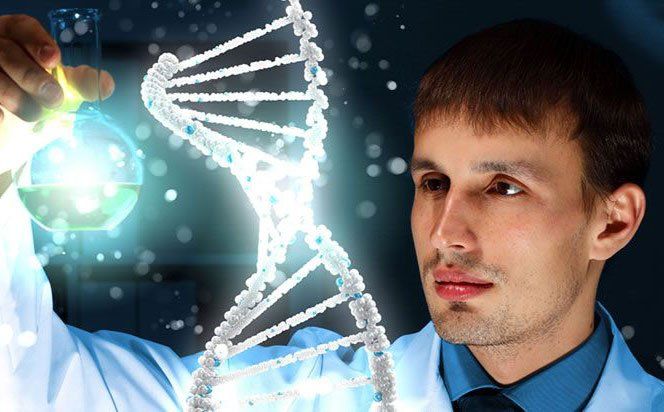MY ACCOUNT
REV-ERBA-BETA
Rev-ErbA-beta (RVR, NR1D2)
- Species: Human
- Expression Host: Baculovirus-insect cell
- Tag: His-tag
- Purity: 90%
- Molecular Weight: 66.6 kDa.
- Gene Accession Number: NM_005126.
Purification and Quality Control
The His-tag recombinant protein is purified by affinity chromatography in combination with FPLC columns.
The purified Rev-ErbA-beta is greater than 95% homogeneous based on SDS-PAGE analysis.
Unit Definition (Activity)
1 unit equals 1 nanogram of purified protein. 1 unit is the amount sufficient for a gel mobility shift assay in a 20 µl reaction; 100 units are sufficient for a protein-protein interaction assay detected by immuno-blot system.
Applications
For Research Use Only and not for Drug or Diagnostic purposes. Rev-ErbA-beta can be used for gel mobility shift assay, for protein-protein and small molecules-protein interactions assay.
Formulation and Storage
The protein is in 20mM Tris-HCl pH7.9,100mM NaCl, 0.2mM EDTA, 1mM DTT and 20% glycerol. Stored at -70°C before use. Avoid repeated freeze thaw cycles.
Synonym
NR1D2; BD73; EAR-1R and RVR..
Protein Sequence
MEVNAGGVIA YISSSSSASS HASCHSEGSE NSFQSSSSSV PSSPNSSNSD TNGNPKNGDL
ANIEGILKND RIDCSMKTSK SSAPGMTKSH SGVTKFSGMV LLCKVCGDVA SGFHYGVHAC
EGCKGFFRRS IQQNIQYKKC LKNENCSIMR MNRNRCQQCR FKKCLSVGMS RDAVRFGRIP
KREKQRMLIE MQSAMKTMMN SQFSGHLQND TLVEHHEQTA LPAQEQLRPK PQLEQENIKS
SSPPSSDFAK EEVIGMVTRA HKDTFMYNQE QQENSAESMQ PKRGERIRKN MEQYNLNHDH
CGNGLSSHFP CSESQQHLNG QFKGRNIMHY PNGHAICIAN GHCMNFSNAY TQRVCDRVPI
DGFSQNENKN SYLCNTGGRM HLVCPMSKSP YVDPHKSGHE IWEEFSMSFT PAVKEVVEFA
KRIPGFRDLS QHDQVNLLKA GTFEVLMVRF ASLFDAKERT VTFLSGKKYS VDDLHSMGAG
DLLNSMFEFS EKLNALQLSD EEMSLFTAVV LVSADRSGIE NVNSVEALQE TLIRALRTLI
MKNHPNEASI FTKLLLKLPD LRSLNNMHSE ELLAFKVHP
Background
Nuclear receptors form the largest known family of transcription factors and have a crucial role in nearly all aspects of vertebrate development and adult physiology by transducing the effects of hormones into transcriptional responses (1). Members of the steroid/thyroid hormone nuclear receptor (NR) superfamily bind specific DNA elements and function as ligand activated transcription factors (2). This group includes the `orphan receptors` which have no known ligands in the `classical sense` and appear to be the ancient progenitors of this receptor superfamily. The Rev-erb family of proteins are orphan members of the receptor superfamily. Two isoforms of the Rev-erb family have been isolated from mammalian genotypes, Rev-erbA[alpha] (3) and Rev-erbA[beta]/RVR (4). Major differences between the two isoforms occur within the hyper-variable A/B and D regions of the proteins (5). Both isoforms are expressed in a wide range of tissues and are present in all major organs. Rev-erbA[alpha] mRNA is upregulated during adipocyte differentiation but repressed during myogenesis (6, 7). These orphan receptors are closely related to the ROR/RZR[alpha] gene family (retinoic acid receptor related orphan receptor) and the Drosophila orphan receptor, E75A, particularly in the DNA-binding domain (DBD) and the putative ligand-binding domain (LBD) (5). RVR and Rev-erbA[alpha] bind as monomers to an asymmetric ( A / T ) 6 RGGTCA motif (5, 8). The Rev-erb family has also been demonstrated to bind as homodimers to novel HREs consisting of two tandemly arranged AGGTCA motifs, separated by 2 bp with unique 5` flanking and spacer nucleotides (RevDR-2) (9, 10). Reports on the transcriptional properties of the Rev-erb family were initially conflicting. Rev-erbA[alpha] was first reported to act as a constitutive activator of transcription through its cognate monomeric asymmetric motif (5). Recently, it has been demonstrated that members of the Rev-erb family are, in fact, dominant repressors of transcription (4, 7, 9, 11). Rev-erbA[beta] is expressed in the central nervous system, skeletal and dorsal muscles, spleen and mandibular and maxillar processes (4, 5, 11, 12). During embryogenesis RVR is expressed in the notochord and neural tube, but its function/role during differentiation and mammalian development remains obscure.
Image of SDS-PAGE /Western-blot

1. Mangelsdorf, D.J. et al. (1995) Cell, 83, 835-839.
2. Evans,R.M. et al. (1988) Science, 240, 889-895.
3. Lazar,M.A et al. (1989) Mol Cell Biol., 9, 1128-1136.
4. Retnakaran,R., et al. (1994) Mol. Endocrinol. , 8, 1234-1244.
5. Dumas,B.,et al. (1994) Mol. Endocrinol., 8, 996-1005.
6. Chawla,A. et al.(1993) J. Biol. Chem., 268, 16265-16269.
7. Downes,M., et al.(1995) Mol. Endocrinol., 9, 1666-1678.
8. Harding,H.P et al. (1993) Mol. Cell. Biol., 13, 3113-3121.
9. Harding,H.P. et al. (1995) Mol. Cell. Biol., 15, 4791-4802.
10. Adelmant,G., et al. (1996) Proc. Natl. Acad. Sci. USA, 93, 3553-3558.
11. Forman,B.M., et al. (1994) Mol. Endocrinol., 8, 1253-1261.
12. Bonnelye,E., et al. (1994) Cell Growth Differentiat., 5, 1357-1365.
DISCLAIMER
This products is recommended For RESEARCH USE ONLY and is Not qualified for Use in Diagnostic or Therapeutic Procedures.




